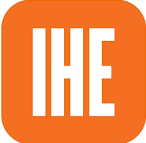
Higher Ed Drive
December 08, 2025 Student Success, Value and Affordability
The Education Department is raising awareness regarding what they deem to be ”low return” institutions by introducing a new feature that alerts first time FAFSA applicants if they have selected institutions whose graduates, on average, earn less than those with high school diplomas. The warning is for informational purposes and bears no impact on the FAFSA application process or eligibility determination. This initiative, live as of December 8, aims to make the college decision process more transparent as it relates to potential post-secondary outcomes.

Higher Ed Drive
November 11, 2025 Student Success, Value and Affordability
A new $100,000 fee for H-1B visa requests has been introduced by the current administration. This increase is substantial, as previously fees ranged from $2,000 – $5,000. Many higher education institutions across the nation rely on this community of visa holders, as H-1B visa holders are often hired to lead in research. This new established fee is applicable to new petitioners from outside of the United States. Higher education institutions have challenged this new regulation, advocating for policy changes and exemptions. Although no changes have stemmed from these actions, universities are advised to explore alternative visa options and continue advocating about the impact of this policy on education and overall economy.

Higher Ed Drive
October 25, 2025 Student Success, Value and Affordability
A recent study from the University of Arkansas found only 9 of the 1,584 U.S. colleges could be classified as “equity engines”. This classification applies to institutions where at least 34% of students receive Pell Grants, and among those, 55% graduate within six years. The exclusivity of U.S. colleges leaves many low-income students lacking equitable access to college. The study recommends expanded investment in colleges that may be close to fulfilling the established “equity engine” qualifications. Institutions more generally must also be willing to undergo institutional changes that embrace shared and equitable learning opportunities.

Inside Higher Ed
October 07, 2025 Student Success, Value and Affordability
College students often underestimate the cost of attending college. Only about 27% of students claim to fully understand the expenses and costs associated with tuition, housing, and other fees. Students share that these costs and other unanticipated costs could impact their active enrollment at collegiate institutions. Although institutions can often offer emergency aid and other financial support to students, many are unaware of these resources. The survey in this article highlights the current disconnect between available institutional support efforts and student knowledge and awareness. Cost transparency and improved communication efforts can assist with student retention related to financial matters.

HigherEd Dive
The federal Grad PLUS loan program was recently eliminated via the “One Big Beautiful Act” . This program allowed graduate students to borrow up to their full cost of attendance. The end of the Grad PLUS program will impost strict lifetime borrowing limitations, which may drive students toward the use of private loans with higher interest rates. While only 16% of graduate students used Grad PLUS, it accounted for 32% of federal loan disbursements and helped finance the most expensive programs. Critics argue the program fueled rising tuition and excessive debt, while supporters warn its end could reduce graduate enrollment and force colleges to cut programs. Experts remain uncertain how the loss of Grad PLUS will reshape access to graduate education and the financial stability of higher education institutions.

Higher Ed. Dive
September 08, 2025 Value and Affordability
Tasked with addressing disputes between students and loan servicers, the Office of Consumer Education and Ombudsman, formerly known as the Financial Student Aid’s Ombudsman Office, is rebranding and expanding. As part of the U.S. Department of Education’s efforts to increase financial literacy of borrowing students and their families, new borrower tools and accessible guideline measures on student loans and repayments are being developed. The FSA also aims to establish a standard manual for servicers that strives to address borrower complaints and “systemic issues” while establishing a set of standards to be followed by student loan servicers.

HIGHER ED DIVE
August 05, 2025 Enrollment Management Trends, Value and Affordability
According to a recent working paper published by the National Bureau of Economic Research, lower-income students get less of a boost to their earnings potential than they once did. The catalyst to this decline can be attributed to a shift in lower-income college students’ enrollment at research universities and study fields with high returns which ultimately impacts their long-term earning potential. Colleges historically attended by lower-income students such as teaching-oriented public universities, have experienced declines in “funding, retention, and economic value since 1960.” Lower-income students now receive less than half the earnings boost from college as their higher-income peers and currently have a 5-percentage income gap.

HIGHER ED DIVE
March 27, 2025 Pre-College Outreach, Enrollment Management Trends, Value and Affordability
According to the Western Interstate Commission for Higher Education (WICHE), high school graduates will peak at 3.8 million students in 2025, leading to a more gradual decline in college enrollment over the next 15 years. An approximate 15% gradual decline in enrollment would allow institutions and policymakers time to prepare for anticipated financial hardships, potential institution closures, and other demographic shifts. Additional contributing factors to the enrollment decline are the current economy and job market and the increased skepticism about the value of higher education. Preventative measures that can assist institutions’ ability to succeed include: retention rates, implementation of equity and inclusion, and a greater shift to a non-traditional learning environment.

Inside Higher Ed
February 24, 2025 Enrollment Management Trends, Value and Affordability
In January, the Congressional Budget Office (CBO) projected a $2.7 billion budget shortfall for the Pell Grant program next fiscal year, its first shortfall in over a decade which was not expected until 2029. By fiscal year 2026–27, the CBO projects that the program will be short $10 billion unless Congress puts more money toward the grants. The Pell Grant provides need-based federal financial aid for more than 30 percent of American college students; without a funding increase, low-income students will lose essential funding to assist with rising tuition costs and inflation. The Pell Grant which relies on mandatory and discretionary funds, increases enrollment and completion rates as well as assists with college affordability. The Pell shortfall isn’t in the official spending baseline yet however, Congress will need to act sometime before Sept. 30, the start of fiscal year 2026.

NACUBO
February 12, 2025 Enrollment Management Trends, Value and Affordability
Data from the 2024 NACUBO-Commonfund Study of Endowments (NCSE) reveal that 658 U.S. colleges and universities and affiliated foundations rely on their endowments to support student financial aid, faculty and staff salaries, operating budgets, and more. The 658 institutions in this year’s study represented a total of $873.7 billion in endowment assets. Over the past decade, FY21 generated the highest return for endowments (30.6 percent). The highest FY24 return, an average of 13.0 percent, came from institutions with endowments under $50 million. Specifically, 10-year annual returns were identified as a key measurement of endowment performance, making this spending feasible. In total, participating institutions withdrew $30 billion from their endowments during the fiscal year, a 6.4 percent year-over-year increase. A majority of endowment spending (48.1 percent) funded student financial aid. Endowments operate on the principle of intergenerational equity, meaning that endowment values should be preserved in real (after inflation) terms so that students of future generations will have the same level of endowment support as generations past and present. Higher education institutions rely on their endowments thanks to sound financial management.